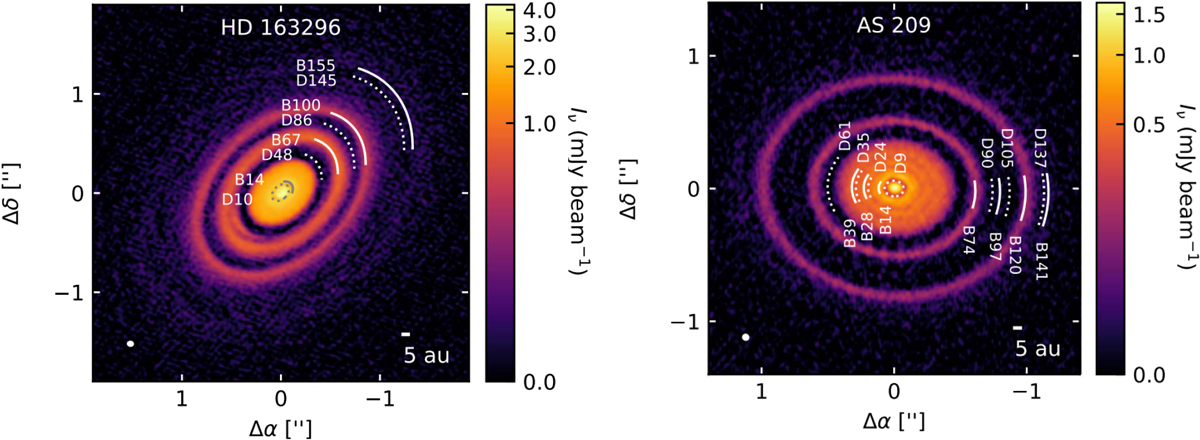Fig. 1

ALMA continuum emission observations of the two systems we used as testbeds for our numerical models, as shown in Huang et al. (2018). Solid and dotted white arcs mark the location of bright rings and dark gaps, respectively, along with their distance from the host star in au. It is likely that a planet is responsible for one or more of the gaps observed in either system. Left: HD 163296, a 12.6 Myr old likely isolated system that features at least two clearly visible gaps at 48 and 86 au. Our models focus on the 20–60 au range, with a planet carving a gap at 48 au. Right: AS 209, a 1 Myr old system in the Ophiuchus region that is rich in annular structures, boasting five rings between 20 and 130 au. This source has been modeled by Zhang et al. (2018), who found that a fit with a single planet at 99 au could reconstruct all five of these rings.
Current usage metrics show cumulative count of Article Views (full-text article views including HTML views, PDF and ePub downloads, according to the available data) and Abstracts Views on Vision4Press platform.
Data correspond to usage on the plateform after 2015. The current usage metrics is available 48-96 hours after online publication and is updated daily on week days.
Initial download of the metrics may take a while.


